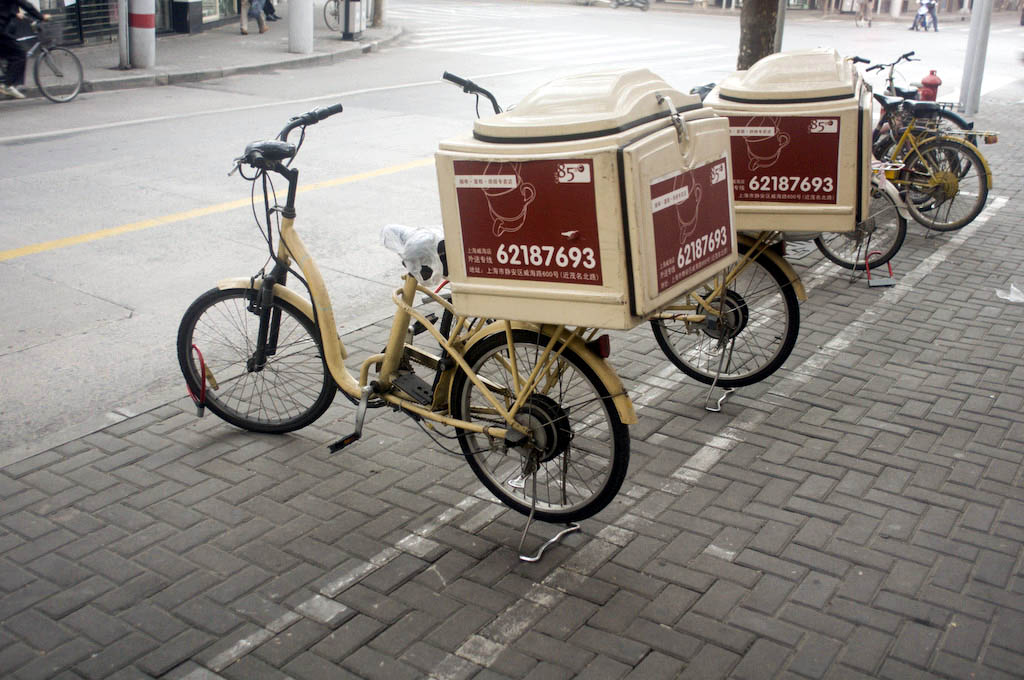Meal delivery in Shanghai.
What meals are currently off-limits for home delivery and why? To what extent do changes in local delivery norms alter consumption habits? Whilst a shift from motorised transport extends the likely delivery range, how does the additional speed affect the meal’s appearance? How the food tastes? The customer’s level of anticipation?
Fast forwarding to a distant future perfect – how will teleportation or other ways of matter-location-shifting affect the home delivery business? The most likely business model? Customers and restaurants will receive a home teleportation device for free and the service provider generates revenue charging for every meal delivered. The home food delivery industry will go through a revolution with consumers being able to select meals from anywhere. When you can have anything what decisions will affect your choice? (And by the same token – right now you could be reading any website, why are you here?) If there was a good catch of Tuna in Sado today – you might go for fresh sushi. Your Indian take-away will arrive from India, naturally. Whilst the market for take-away food will become hyper-competitive i.e. competing with anyone whose ever picked up an egg whisk, brands will matter more as consumers turn to trusted sources of food and suppliers that are able to translate international and intranational foods for the local palette.
Some will prefer to have the raw ingredients teleported over, wanting to prepare the food themselves and you’ll never go without an ingredient again. Asking a loved one to pick up the milk on the way home (and for that matter taking out the trash) will be things from our past. Globally popular TV chefs will be the new-power brokers in society – capable of shifting a year’s supply of Kenyan butter beans or [insert name of any foodstuff] in a matter of minutes through a single broadcast, through not before buying low and selling high. Everyone needs to eat – it just takes a little direction to get them to buy from you.
Whilst you might think this scenario is far far off there are elements that are already here and more that are just around the corner, if not for food then for other tangibles. Fax machines create a tangible output based on the tangible or digital command from a remote someone. Who will be the first to offer a free internetworked home printer where the sender pays to print? At what point do internetworked 3d printing technologies arrive in the home?
